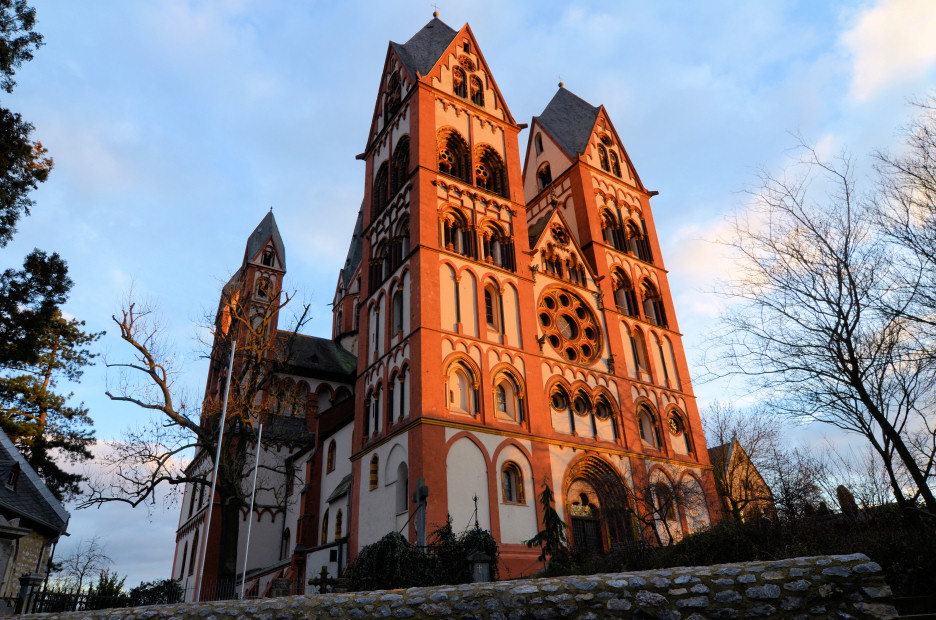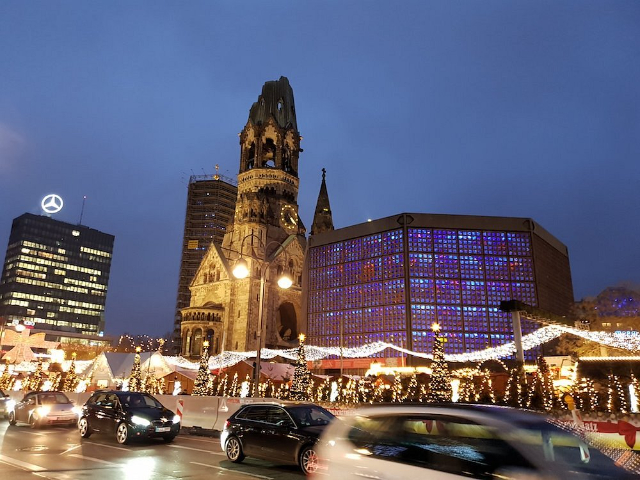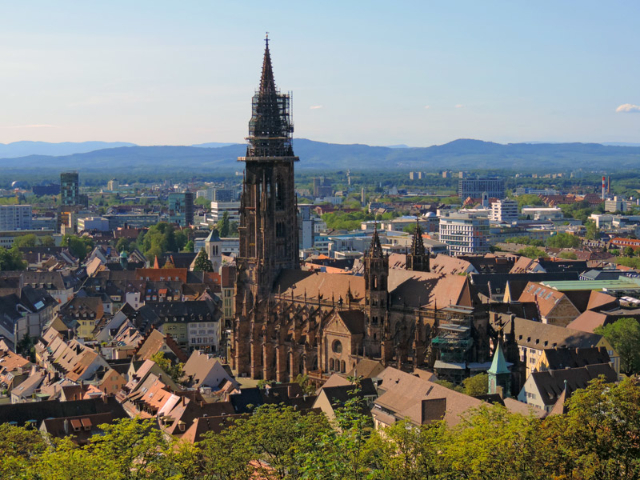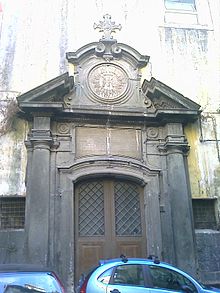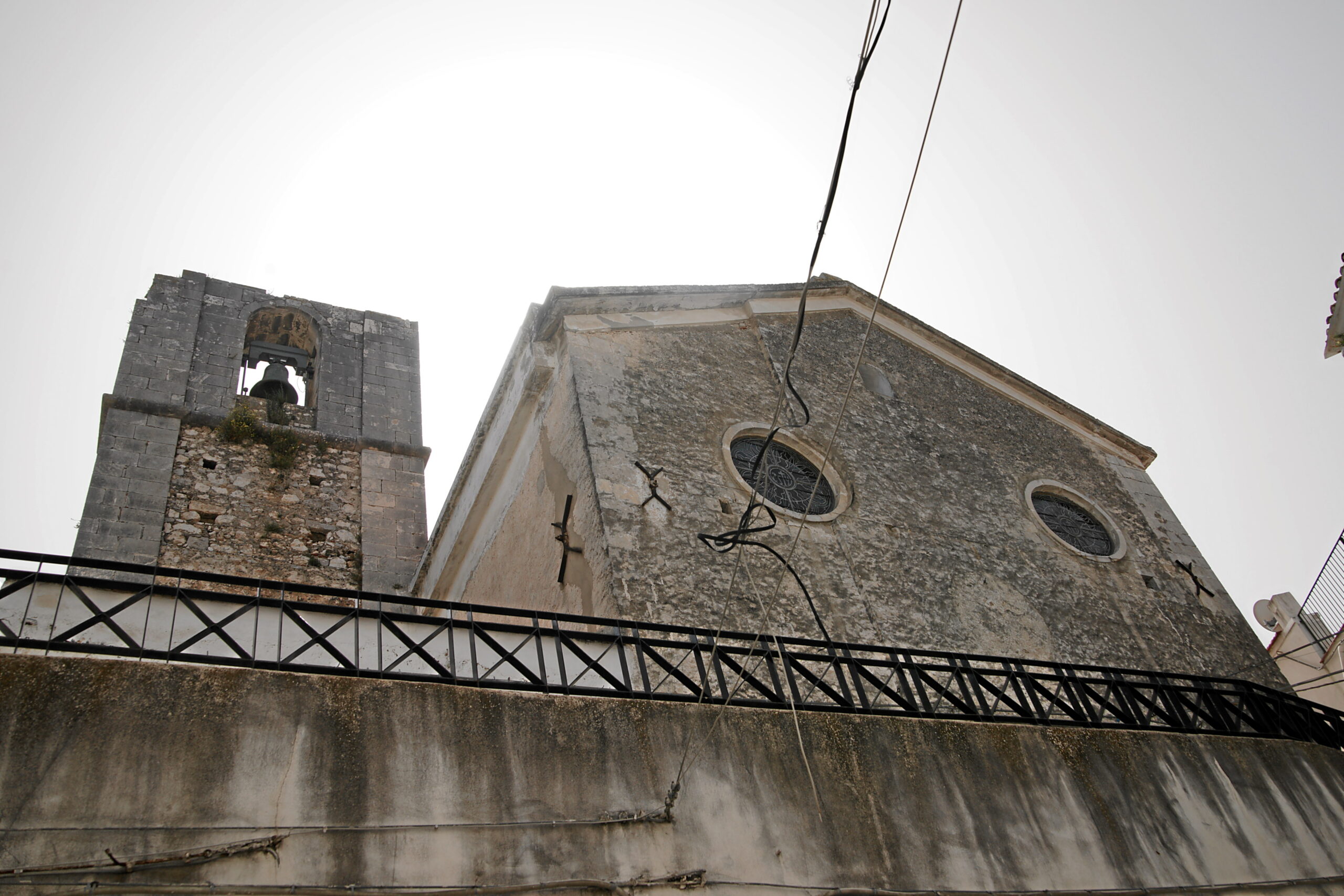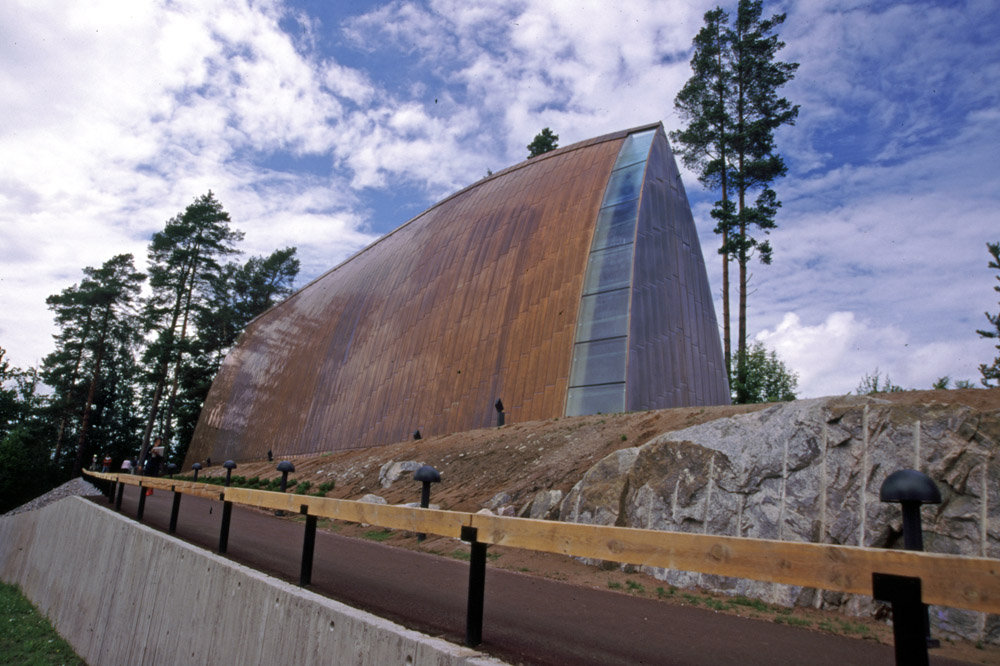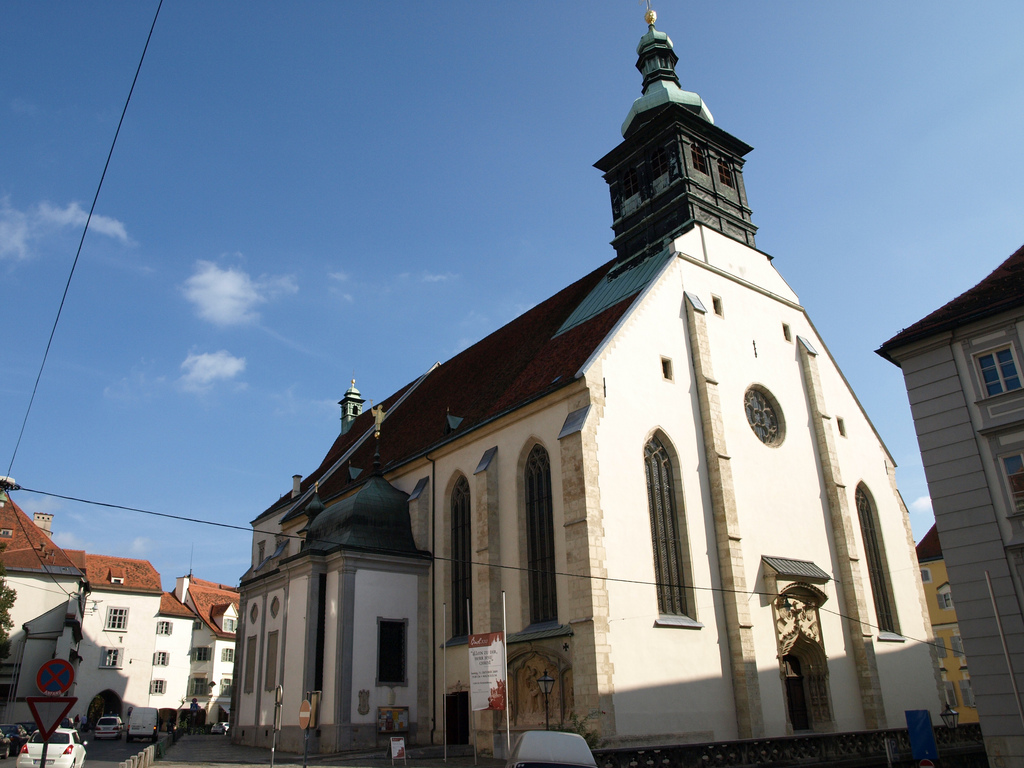The Cathedral of Limburg is one of the best preserved late Romanesque style buildings. It is unknown When the first church was built above the Lahn river. Archaeological discoveries have revealed traces of a 9th-century church building in the area of the current chapel. It was probably built in Merovingian times as a castle and the chapel added in the early 9th century.
In 910 AD, Count Konrad Kurzbold (cousin of the future King Konrad I) founded a collegiate chapter of 18 canons, who lived according to the rule of Bishop Chrodegang of Metz, on the hilltop site. The original castle chapel was torn down and a three-aisled basilica was built in its place. The foundations of this basilica have been found beneath the present floor.
The construction of current cathedral is dated to 1180-90. The consecration was performed in 1235 by the archbishop of Trier. It seems certain that the cathedral was built in four stages. The first stage encompassed the west facade, the south side aisle, the choir and the transept up to the matroneum. This section forms the Conradine church. The second stage consisted of the addition of the inner pillars of the south nave. In this stage the bound system was first introduced. In the third phase, the matroneum in the southern nave was built. The fourth stage included the north side of the transept and the choir matroneum. By this stage Gothic influence is very clear.
The interior was destroyed by Swedish soldiers during the Thirty Years War (1618-48) and reconstructed in a late Baroque style in 1749. The Baroque renovation was heavy-handed: the surviving medieval stained glass windows were replaced; all the murals were covered up; the ribs of the vaults and columns of the arcades were painted blue and red; the capstones were gilded; the original high altar was replaced. The colorfully painted exterior was coated in plain white and the central tower was extended by 6.5 meters.
The collegiate chapter of Limburg was dissolved in 1803 during the Napoleonic period, but then raised to the rank of cathedral in 1827 when the bishopric of Limburg was founded. Some renovations in contemporary style followed: the walls were coated white, the windows were redone in blue and orange (the heraldic colors of the Duke of Nassau) and towers were added to the south transept (1865).
Further changes came after Limburg was incorporated into the Kingdom of Prussia in 1866. It was now the Romantic period and the cathedral was accordingly restored to an idealized vision of its original Romanesque appearance. The exterior stonework was stripped of all its plaster and paint, to better conform with the Romantic ideal of a medieval church growing out of the rock. The Baroque interior was stripped away and the wall paintings were uncovered and repainted.
Further renovations came in 1934-35, enlightened by better knowledge of the original art and architecture. Art Nouveau stained glass windows were also added. A major restoration in 1965-90 included replastering and painting the exterior, both to restore it to its original appearance and to protect the stonework, which was rapidly deteriorating while exposed to the elements.
The interior is covered in medieval frescoes dating from 1220 to 1235. They are magnificent and important survivals, but time has not been terribly kind to them – they were whitewashed over in the Baroque period (1749) and uncovered and repainted with a heavy hand in the Romantic period (1870s) before finally being restored more sensitively in the 1980s.
References:
Sacred Destinations
